SALAD
1. A NATURAL SOURCE OF FIBRE
Your leafy greens and raw veggies are a superb source of natural fibre, and consuming enough fibre each day has several health advantages:
- Fibre helps to reduce LL or “bad” cholesterol.
- It helps to control blood sugar.
- Adequate fibre intake helps with weight loss and healthy weight maintenance.
- It normalises bowel movements, and aids in the prevention of bowel disease.
- Proper fibre intake has been shown to reduce the recurrence and prevention of a number of cancers including correctional, breast, mouth, throat and oesophagus .
2. NUTRITIONAL BENEFITS OF FRESH FRUITS AND VEGETABLES
The idea that fresh vegetables and fruits are essential to our good health and well-being isn’t anything we haven’t heard before, but it’s good to be reminded of it every so often. The following quote is from an article at the Harvard School of Public Health:
“A diet rich in vegetables and fruits can lower blood pressure, reduce risk of heart disease and stroke, prevent some types of cancer, lower risk of eye and digestive problems, and have a positive effect upon blood sugar which can help keep appetite in check”.
It’s important to eat a variety of fresh fruits and vegetables, in as many different colours as possible. Combining them in a salad is both easy and delicious! Loaded with vitamins and minerals, eating a salad a day will also increase the level of powerful antioxidants in your blood.
The basis of any salad, leafy greens, offer a huge nutritional benefit. Among the best of the super greens group are: kale, spinach, beet greens, watercress and Romaine lettuce . For something a little different, try adding fresh dandelion greens and Izanami as well.
Brightly coloured fruits and vegetables in the “red” family are of particular nutrition benefit. This includes produce with orange, purple, red and burgundy flesh. Some examples are tomatoes, red and orange peppers, carrots, strawberries, nectarines, peaches, plums, blueberries, blackberries, cranberries, and pomegranates.
Carotids are a class of compounds synthesised from the yellow, orange and red pigments of plants. This includes vitamin A and all its varied compound forms: beta-carotene, Penelope, lute in and Xanthippe. All of these have substantiated positive effects, plus antioxidant and anti-inflammatory benefits within the body.
3. LOAD UP ON SALADS FOR WEIGHT CONTROL
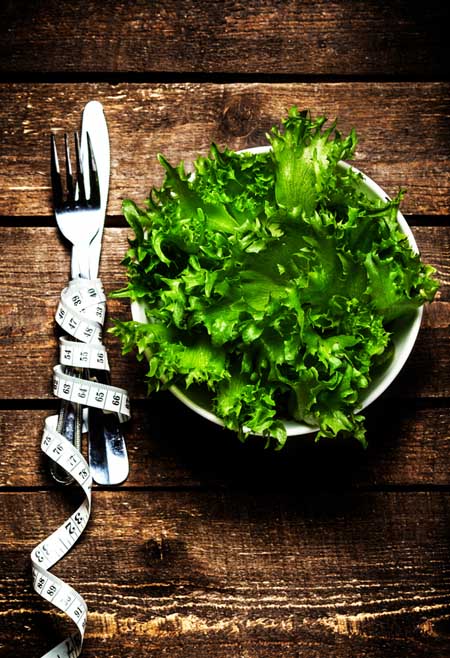
Eating a fibre-rich salad before your entree will help you to feel full faster, so you’ll consume less calories than you might when a meal is served without this appetiser. The more raw vegetables you can incorporate into your salad, the greater the potential positive effects will be.
4. A DAILY SALAD WILL AID YOUR INTAKE OF HEALTHY FATS
Add a couple of tablespoons of mixed raw or roasted seeds like pumpkin, sesame, sunflower and ground flax or chis to boost your daily intake of good fats. Experimenting with different kinds of oils in your dressings will help with this, too.
Slicing a quarter of an avocado and adding it to your greens will also give you a boost. These foods also help the body to absorb all of the protective compounds, petrochemicals, and lute in.

Adding a healthy fat to your salad via the dressing, or by adding healthy raw nuts or avocado will also make it more filling, as fats are among the most satiating.
5. BUILD STRONG BONES
Low vitamin K levels have been linked with low bone mineral density in women. For healthy bone growth, a recommended full daily serving can be found in just 1 cup of watercress (100%), radicchio (120%) or spinach (170%).
6. PROTECT YOUR PEEPERS
The carotids found in the green leafiest like spinach, Romaine and Red Lettuce help the eyes to adjust from bright to dark, and to filter out high intensity light levels, protecting them from the formation of damaging free radicals.

7. IMPROVE MUSCLE PERFORMANCE
Well, it turns out Popeye knew his stuff. The nutrients found in spinach not only help to build strong bones, they also help to improve the performance of the mitochondria – little structures inside our cells that help to produce energy, as well as inform and power our muscles.
8. PROTECT YOUR HEART
Romaine lettuce contains two key nutrients in significant levels that help to protect the heart muscle: fol ate and fibre. High levels of fol ate have been shown to assist in the prevention of stroke and cardiovascular disease (4).
9. IMPROVES SKIN TONE
The high levels of water found in salad veggies improves hydration in our bodies, which is necessary for youthful skin tone and various basic bodily functions.
GET AN HERBAL BOOST
You can give your salads an extra dose of antioxidants by making your own oil-based salad dressings and including power herbs such as basil, parsley, thyme, cilantro, dill, rosemary, oregano, garlic and lemon. Choose your favourite herb combos, mix with a healthy oil plus lemon juice or vinegar, and season to taste.
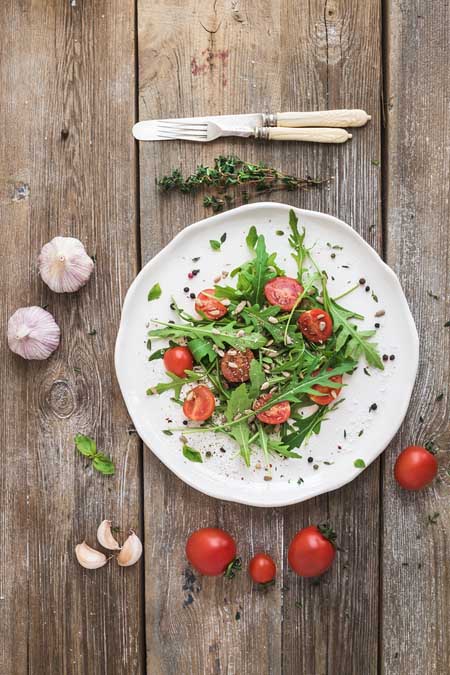
Adding fresh herbs goes a long way toward improving your nutrition, as many are densely packed with vitamins and various nutrients. Because these vitamins and nutrients are produced so intensely, they’re especially nutritionally dense – meaning they’re thermionic, and may help to naturally increase your metabolism.
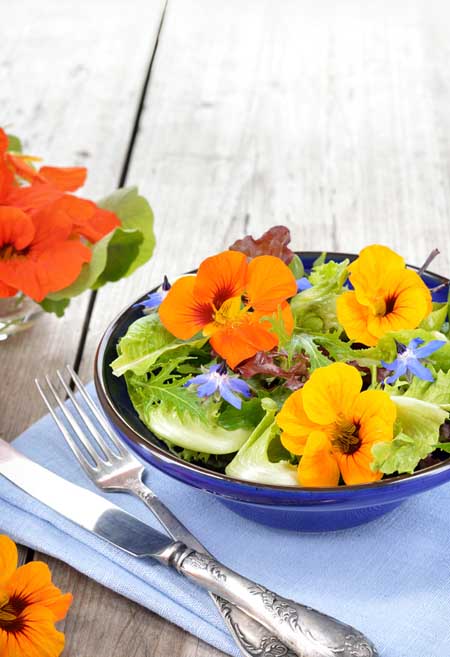
Easy to grow at home, herbs have many positive properties that can be added to your dressings, or sprinkled over the top for extra flavor. Also, don’t be afraid to mix in a few edible flowers – they offer many of the same benefits as traditional herbs.
SUPER SPROUTS
Adding sprouts to your salad is like turbo-charging the nutritional value of your veggies. And, if you want fresh and organic, they’re easy to grow at home, and economical as well.
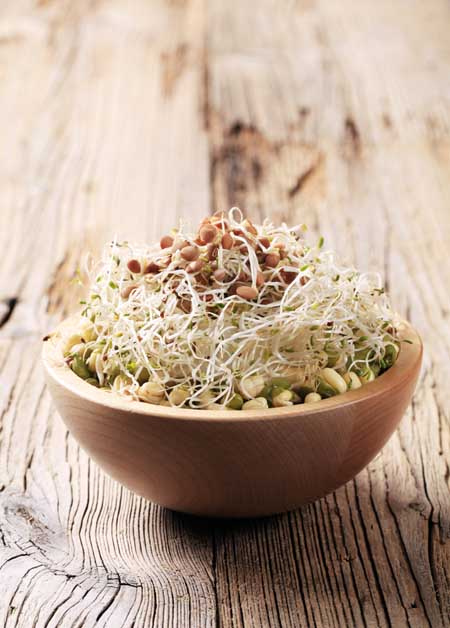
Some of the popular choices for sprouting your own come from a variety of common grains, vegetables and nuts, such as:
- Wheat grass, which has good amounts of vitamins B, C and E.
- Alfalfa, good for vitamins A, C, and K, with significant amounts of oestrogens.
- Mung beans, with a nice protein count, fibre and vitamins A and C.
- Pea shoots, rich in vitamins A and C, and folic acid from the B family, they offer some of the most significant protein levels in the sprout family. And, they taste like garden peas.
- Lentils, since the sprouts contain over 25% protein.
- Clover, high in flavourless.
- Broccoli, a noted source of the anti-cancer enzyme selenographer.
- Sunflower, also offering significant levels of protein along with healthy fats and fatty acids, fibre and minerals.
If you’re planning to sprout some at home, pretty much any untreated, whole seeds will germinate if given the right environment, and most offer significant nutritional benefits.
BABY GREENS
In general, leafy greens are highly nutritious because of the large variety of vitamins and minerals they have to offer. And they contain naturally occurring petrochemicals from plant compounds such as carotids, found in the leaves due to synthesis with sunlight.
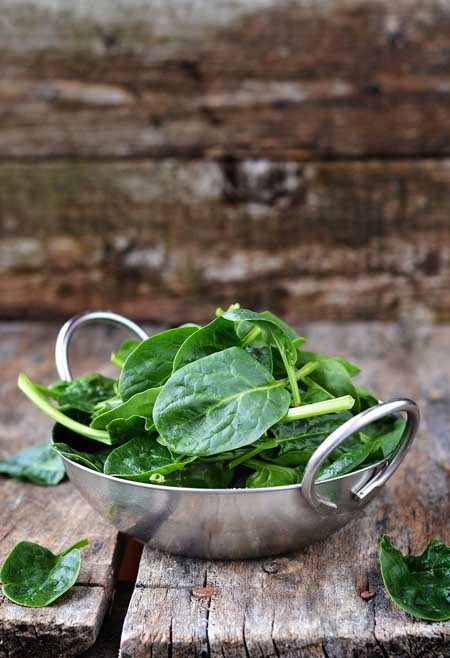
Leaves that are exposed to the greatest amount of sunlight contain the highest amounts of these healthful compounds, such as beta carotene. And when plants are young, their form is loose, so all leaves receive equal amounts of light. This is opposed to mature plants, where only the outer leaves of heads of lettuce receive direct sunlight.
As these nutrition-packed petrochemicals have been shown to offer a range of potential benefits, including anti-cancer and cell protection properties, selecting baby greens provides the highest concentration of these important compounds.

Among baby greens, the young leaves of watercress, spinach and arugula contain the highest levels of potent petrochemicals and other nutrients.
SALAD MISTAKES TO AVOID
The many potential health benefits of adding a salad to your daily diet can be quickly counteracted with the addition of certain cooked ingredients, and commercially produced additives.

Among the worst offenders are salad dressings, as they’re often loaded with high fructose corn syrup for flavor and processed trans fats to prolong shelf life. Low-fat dressings usually have increased sugar levels, with fructose added to compensate for the loss of flavor.
As excess fructose in your diet drives insulin and lepton resistance, major contributors to diabetes and other chronic diseases, it’s a good idea to avoid these added sugars when possible.
Make your own dressings instead, with a healthy oil, herbs and lemon or vinegar for a healthful condiment that will work with your salad, not against it. The healthy fats found in olive oil actually assist the breakdown and absorption of nutrients. Just don’t get carried away.

Another common “mistake” is the addition of cooked or processed foods to a salad. Ingredients such as deli meats (which contain high levels of preservatives and nitrates) full-fat cheeses, croutons, and salted or candied nuts all add flavor and texture, but they come with a price tag of calories, unhealthy fats and extra sugar.
Use these ingredients sparingly to get the most out of your salad’s nutritional potential.
PROTEIN FOR SALADS
If your salad is going to be your main course, make it a balanced meal with the addition of some lean protein. Good quality protein sources for serving with your greens include tofu, eggs, tuna, salmon, prawns (or shrimp), nuts and seeds, lean chicken and turkey, as well as low-fat cheeses, cottage cheese and yogurt.
But even if you are craving some meaty steak, recipes like our breaded beef fillets can be served with a large salad to create a balanced and healthy dinner.
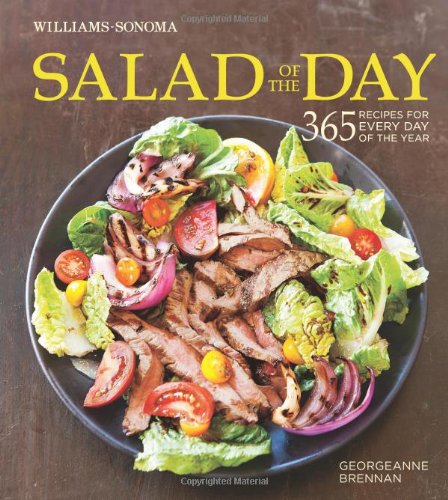
So, get into the habit of having a salad a day, and you’ll benefit quickly from the nutritional boost. Here’s a recipe to get you started.
We’d love to hear about your favourite salads too, so drop us a line and share your ideas!
KALE WITH PEPPERS AND APPLE
Kale is one of the super greens that packs a substantial nutritional wallop, but it can have a bitter taste. To take advantage of its many positive properties, try “massaging” your kale to soften it and remove the bitterness – this actually causes the kale to wilt, as its cellulose structure breaks down.
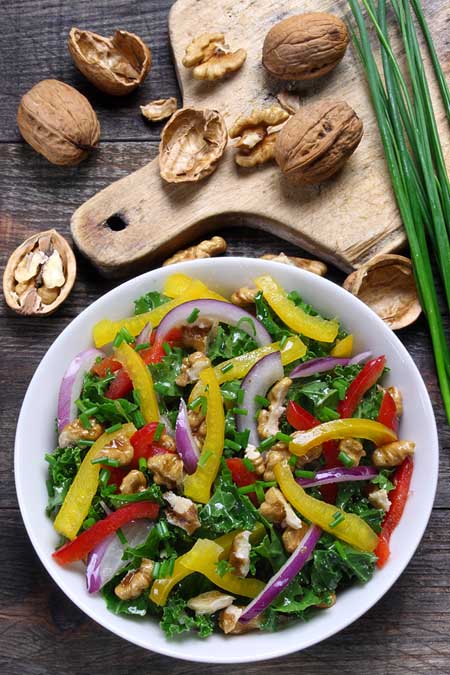
It will soften, change colour, and take on a silky texture, minus the bitterness… well worth the few minutes required! See directions below for the massaging technique.
Post a Comment